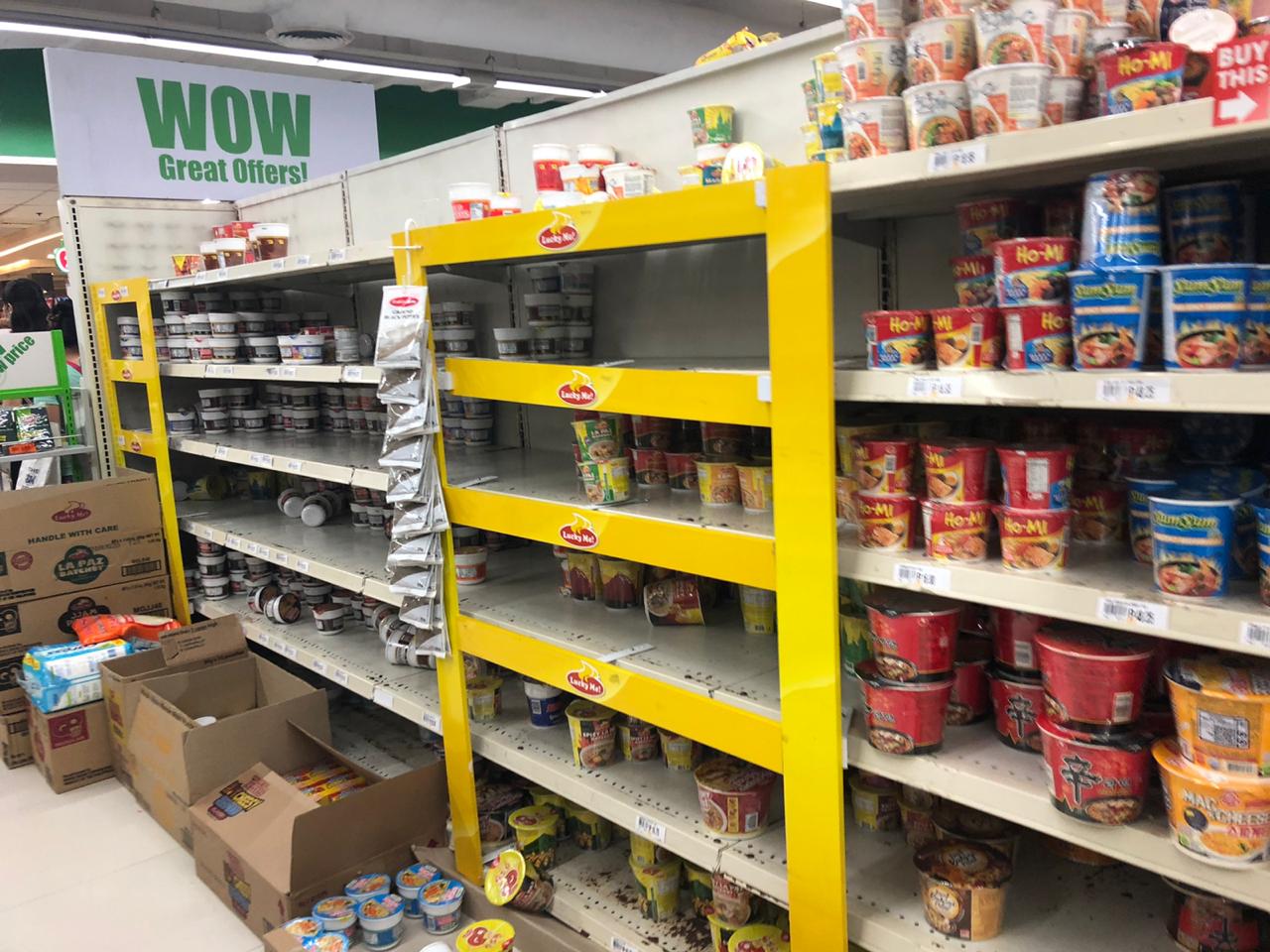LOOK: Panic-buying amid lockdown fears in Metro Manila

MANILA, Philippines — Consumers on Thursday flocked to groceries in Metro Manila to stock up food items and sanitation needs amid fears of localized lockdown in the region due to the 2019 coronavirus threat.
Government officials and the health department already disowned messages prompting the public to start panic-buying due to a proposed lockdown.
But long lines and empty shelves continue in groceries as panic grows on increasing cases of the fatal disease, which has now soared to 52 confirmed cases in the Philippines.
Despite the health protocol of social distancing, groceries appeared to be filled with crowds of panicking consumers.

Contributed Photo
Supermarket-goers’ baskets and shopping carts are full of toilet papers, canned goods, bottles of rubbing alcohol and other basic needs.
The Philippine health department placed the country under Code Red Sub-Level 1 which means there is heightened surveillance for people with respiratory symptoms, intensified contact tracing and stricter home quarantine.

Contributed Photo
It was raised to this alert level after the Department of Health recorded the first local transmission from the wife of the fifth confirmed case of coronavirus disease.
Once Code Red Sub-Level 2 will be raised, lockdown will be imposed. Sub-Level will be implemented if there is sustained community transmission in the country.

Contributed Photo
Currently, DOH reported 52 cases of coronavirus disease in the Philippines. Of which, two are already dead.
The coronavirus disease was caused by the novel coronavirus, which was first emerged from Wuhan City of Hubei province in China.
International Committee on Taxonomy of Viruses named the novel coronavirus as SARS-CoV-2.
The coronavirus causes mild symptoms such as fever and cough for most people but old people and those with existing health conditions will be at high risk for the disease. Coronavirus is a family of viruses, which surfaces have a crown-like appearance. The viruses are named for the spikes on their surfaces.